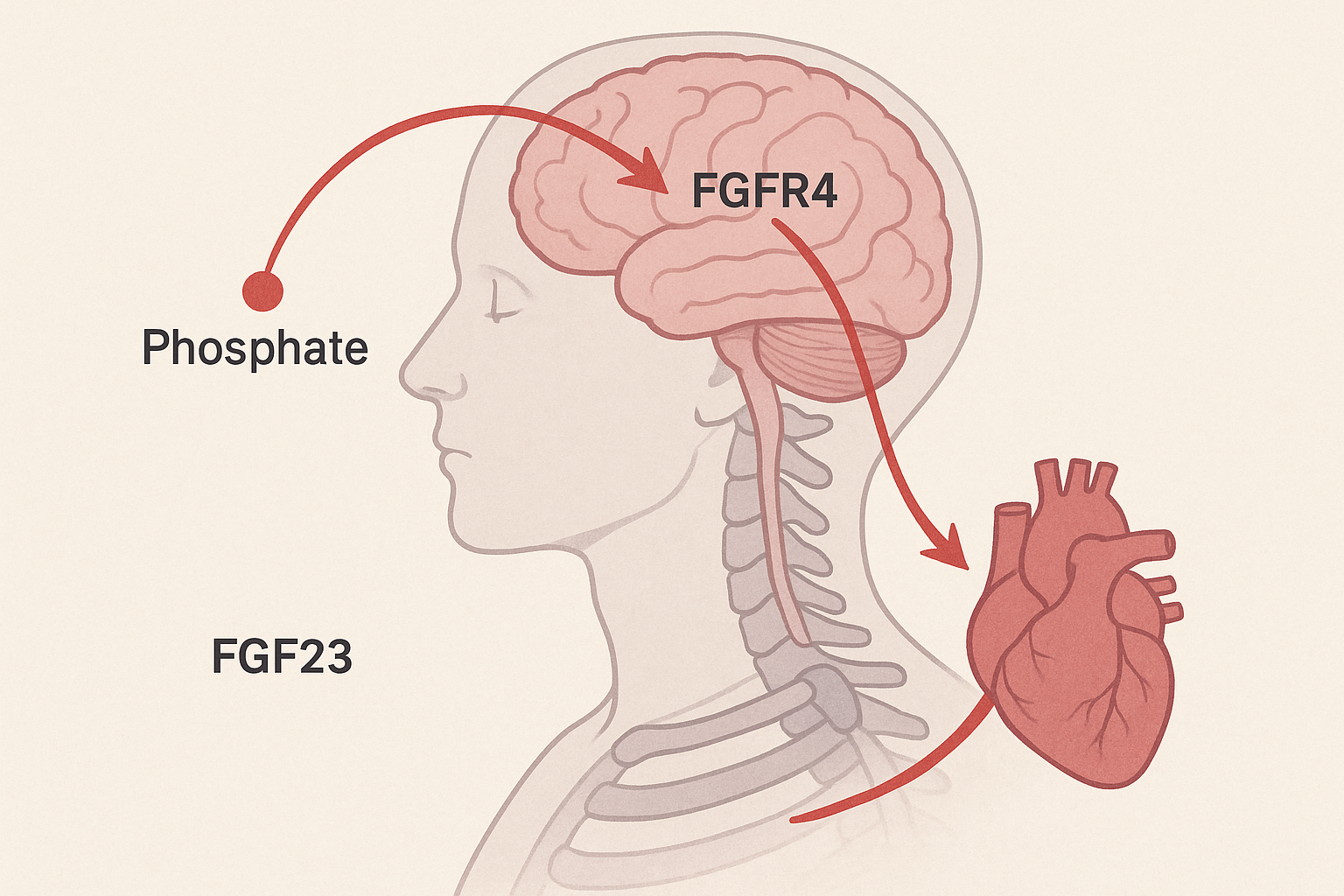
The study by Kim et al. investigates how excessive dietary phosphate intake contributes to hypertension through mechanisms involving the central nervous system. It highlights a novel brain-mediated pathway where high phosphate levels increase the hormone fibroblast growth factor 23 (FGF23), which subsequently crosses the blood-brain and blood–cerebrospinal fluid (CSF) barriers and activates fibroblast growth factor receptor 4 (FGFR4) in the brainstem.
The research used Sprague-Dawley rats fed either a normal phosphate diet (0.6%) or a high phosphate diet (1.2%) over 12 weeks. Results showed that high phosphate intake elevated FGF23 levels in serum, CSF, and specific brain regions (especially brainstem and cerebral cortex). Peripheral intravenous injection of infrared-labeled FGF23 confirmed its presence in the brain, suggesting that it can traverse the blood-brain barrier.
The study then explored whether this central FGF23 affected blood pressure and sympathetic activity. It found that high-phosphate-fed rats had exaggerated renal sympathetic nerve activity (RSNA) and mean arterial pressure (MAP) during exercise. Intracerebroventricular (ICV) injection of a pan-FGFR inhibitor (PD173074) and a selective FGFR4 inhibitor (BLU9931) significantly reduced these responses in high-phosphate rats, but not in controls. Conversely, inhibitors targeting FGFR1–3 or the canonical FGF23/α-Klotho pathway had no significant effect, indicating that the hypertensive response is FGFR4-dependent and α-Klotho–independent.
Further, the study linked FGFR4 activation to increased calcineurin signaling in the brainstem, evidenced by elevated levels of calcineurin A and RCAN1.4 proteins. Central inhibition of calcineurin with cyclosporin A also suppressed the exaggerated hypertensive response in high-phosphate rats.
In summary, this study uncovers a central neural mechanism where high dietary phosphate induces hypertension by increasing FGF23, which acts on FGFR4 in the brainstem and enhances sympathetic outflow via calcineurin activation. These findings identify FGFR4 and calcineurin as potential therapeutic targets to mitigate the cardiovascular risks of high phosphate intake, especially relevant due to the widespread use of phosphate additives in processed foods.
Source: https://www.ahajournals.org/doi/10.1161/CIRCULATIONAHA.124.071605

